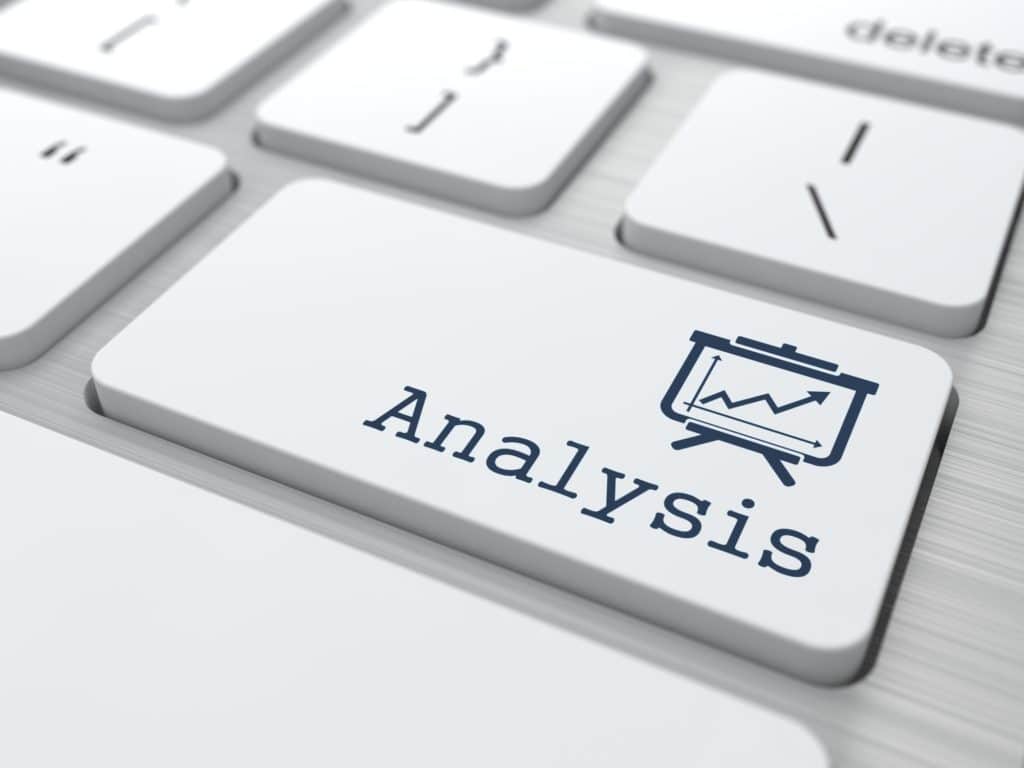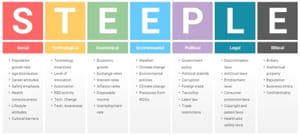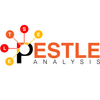What is a STEEPLE analysis, how to do a STEEPLE analysis, how businesses use it and why it looks like a PESTLE Analysis!
In the next 8 minutes, I will be examining STEEPLE analysis and what's the difference with PESTLE analysis. I will describe what STEEPLE analysis is, how it is used, and how to do a STEEPLE analysis in simple steps. I will also go through the external factors and give a few examples, including the Ethical factors! Finally, I will share a short version of STEEPLE, called STEEP analysis. Let's start.
What is a STEEPLE Analysis?
STEEPLE analysis is a business planning tool assessing the external factors (Social, Technological, Economic, Environmental, Political, Legal, and Ethical) that affect an organization's operations. By knowing how the macro-environment influences the business, strategic planners can make better decisions.
What is the difference between PESTLE and STEEPLE analysis?
STEEPLE analysis is the same as a PESTLE analysis, except it includes examining the Ethical factors. That's the only difference. Both analyses are used for examining the external macro environment an organization operates within.

What is STEEPLE analysis used for?
Business owners and strategists spend a lot of time analyzing their companies' internal capabilities. Usually, that's done with a SWOT analysis to pinpoint the Strengths and Weaknesses, the internal factors affecting an organization.
External factors have an equal impact on a firm's success, though. STEEPLE analysis is a great way to prompt helpful discussion. The purpose of STEEPLE analysis is to determine a business's position within its external environment by highlighting how society, technology, the economy, the environment, politics, the legal system, and people's ethical values affect the business.
How to do a STEEPLE analysis
How do you write a STEEPLE analysis? Much like in PESTLE analysis, in STEEPLE analysis, we break down every letter of the acronym.
- We begin by identifying the 7 STEEPLE factors we mentioned
- We collect the data and necessary information covering those factors
- We list our findings under the corresponding letter of the STEEPLE analysis template
Based on our final analysis, we can then assess the situation and the environment and how it affects the organization in question. We can move a step forward and do the same for the competitors. In the end, STEEPLE analysis' ultimate goal is to come up with strategies that will help the organization:
- take advantage of factors that influence it positively and
- prepare for the factors that will affect it negatively.
Let's now go through the STEEPLE analysis factors:
Social Factors
In the first step of STEEPLE analysis, you have to look carefully at society and judge the cultural changes that take place in the business environment. Our research will reveal trends and patterns among the population.
When analyzing the social environment, you might need to study population growth, changes in consumer attitudes and preferences, age structure, demographic shifts, or lifestyle changes. In effect, this is the same work we do for social factors during a PESTLE analysis.
Technological factors
Technological factors are variables related to the existence, availability, and development of technology. These could include everything related to technology. Notable technological factors I come across during my analyses are:
- E-commerce
- Cybersecurity Threats
- Emerging Technologies
- Big data and computing
- AI and Machine Learning
- Supply Chain Automation
Changes in production methods can pose new opportunities for the organization. These can help improve a company’s profit margin, but they require huge initial investments.
Economic factors
In the first (E) part of the STEEPLE Analysis, we run into how the economy affects the organization. I consider the following when doing a STEEPLE analysis:
- Tax rates
- Recession
- Interest rate
- Inflation rates
- Exchange rates
- Unemployment rate
For example, if the trends suggest that the country is going through a recession, organizations need to factor that into their business strategy.
Do these factors remind you of something? Yes, we take the same factors into consideration when doing a PEST analysis, which is a short version of the PESTLE analysis!

Environmental factors
The second E in STEEPLE is all about the environment. When doing a STEEPLE analysis (or any other analysis covering environmental factors), I often examine the following:
- Climate change
- Sustainability
- Environmental regulations
- Waste Management
- Consumer Environmental Awareness
Political factors
Political factors are government, trade and tax policies, general political issues, changes in leadership, regulation, and political trends. It's all about how the government or international bodies change the business macro environment with their rulings. Quite often these factors can have an impact on other factors, such as the legal ones which are next up!
Legal factors
Legal factors are critical in shaping the operational, strategic, and ethical framework within which any organization operates. Legal factors are sometimes grouped together with political factors in a PEST analysis, but in a STEEPLE analysis – which is what we’re doing – the two are separated.
Usually, during a STEEPLE analysis, I check the following at this part:
- Labor Laws and Practices
- Competition Laws
- Environmental Legislation
- Data Protection and Privacy Policies
- Import/Export Regulations
- Health and Safety Standards
- Specific Regulations affecting the organization in question
Ethical factors
The last E in STEEPLE refers to the range of social values that shape business behavior. Ethics comes from the Greek word “ethos,” meaning character. The values provide a basis for what is right and what is not. The ethical ideas of a country will not change overnight. But, small changes in morality take place over time.
In STEEPLE analysis, the Ethical factors are often the following:
- Volunteering
- Anonymity
- Confidentiality
- Reputation
- Informed consent
- Bribery
Taking the ethical factors into account will take an organization to a better ethical standing.
Difference between STEEPLE and STEEP Analysis

The STEEP analysis is a similar strategic tool. STEEPLE and STEEP are almost identical versions of each other. Their common goal is to define strategies for the future or to understand the macro enviroment. The best way to separate STEEPLE from STEEP is to say that it is a modified version. The STEEPLED analysis is another variation.
The STEEP framework has undergone many alterations. Along the way, strategic planning experts have added certain factors to the analysis. When they thought the STEEP analysis was not enough for some organizations, they felt the need to add elements like Legal and Ethical.
The legal and Ethical aspects of an environment are not considered in STEEP. However, as they prove important for some firms, they choose to perform STEEPLE analysis.


